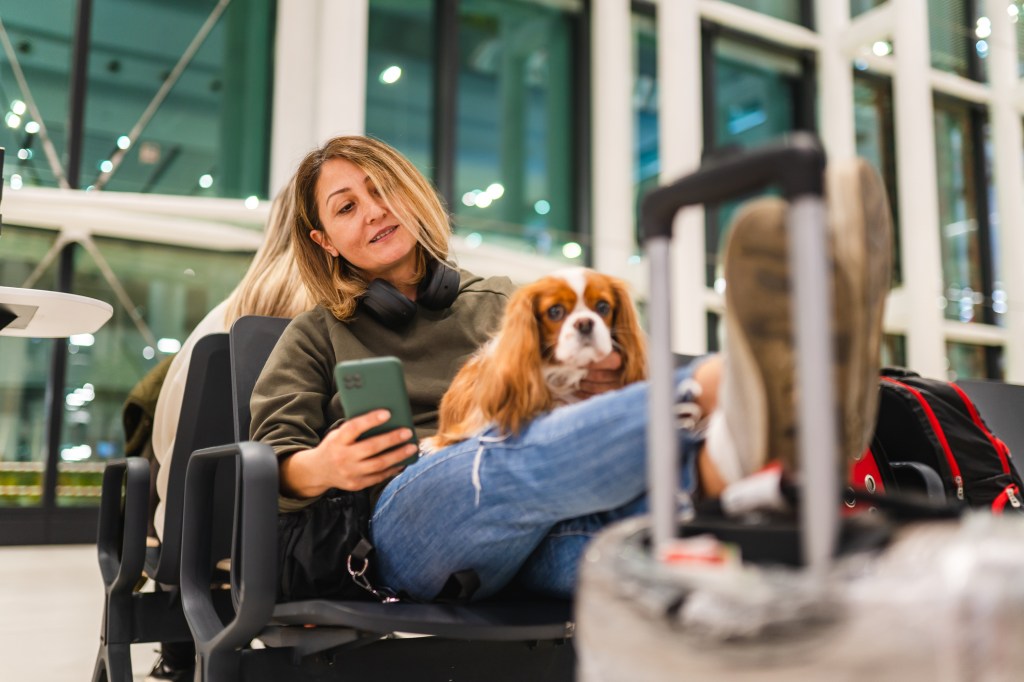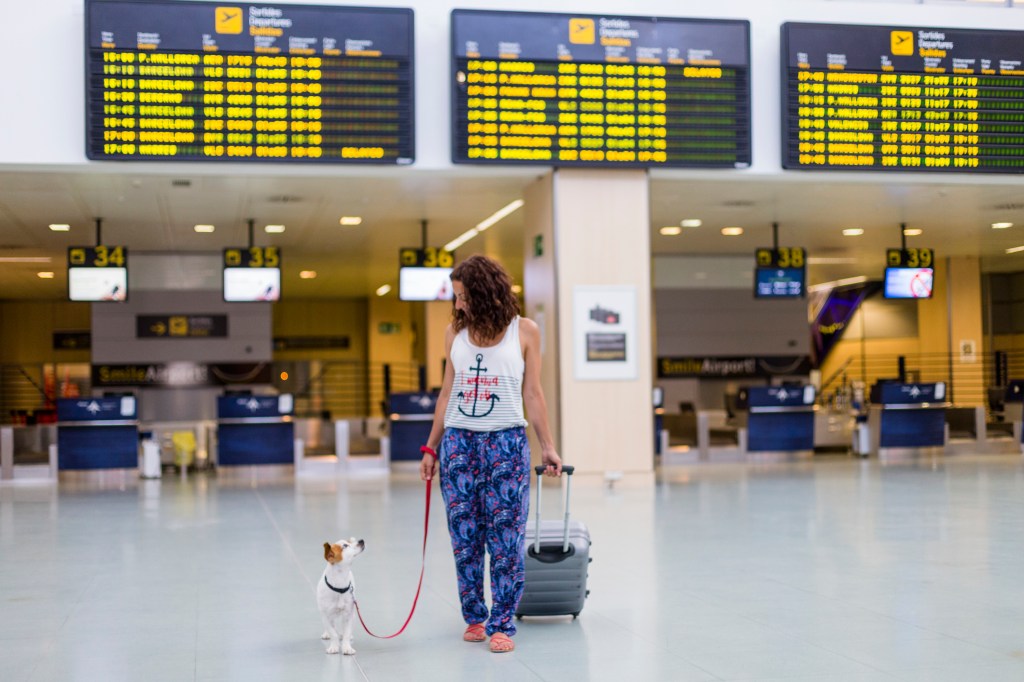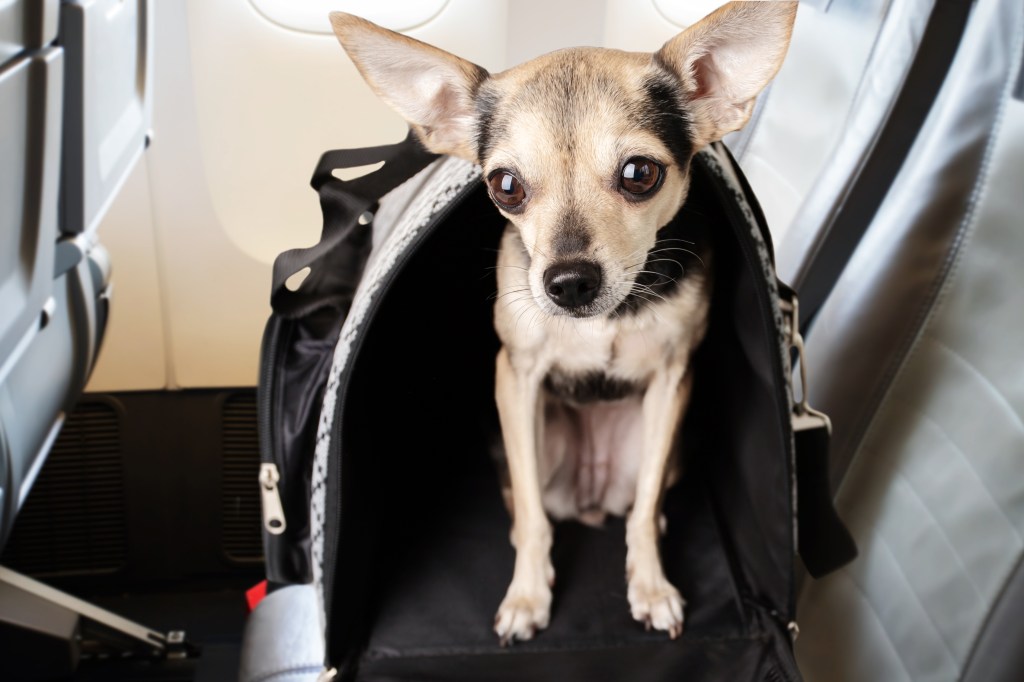Flying with your dog can be a great way to travel together, but it’s important to be aware of the costs involved. The cost to fly your dog depends on a number of factors, including the airline, the size and weight of your pooch, the distance you are flying, and whether you are flying your pup in the cabin or the cargo hold. Before you take off to live that jet-setter lifestyle, learn how you and your four-legged friend can both afford to reach your destination — safely and in style.
Location, location, location: Dogs flying in the cabin versus in cargo holds
Cabin: If your dog is small enough to fit in a carrier that can be placed under the seat in front of you, you can usually fly them in the cabin for a fee of around $100-150 each way. However, not all airlines allow dogs in the cabin, so you will need to check with your airline in advance.
Cargo: With the exception of service dogs, most larger dogs must fly in the cargo hold. The cost of flying a dog in cargo varies depending on the airline, but it is typically between $200-400 each way for a 40-pound dog. Some airlines also charge an additional fee for each pound your dog weighs over the maximum weight limit.
International flights: The cost of flying your dog internationally is even higher. It can range from $500-1,000 each way for a 40-pound dog. In addition to the base fee, you may also need to pay for additional documentation, such as an import permit.
Other costs associated with flying with your dog

In addition to the base fee, there are other potential costs associated with flying your dog, such as:
- Pet carrier: You will need to purchase a pet carrier that meets the airline’s requirements. This can cost anywhere from $30-250.
- Health certificate: Your dog will need a health certificate from your veterinarian before they can fly. The Certificate of Veterinary Inspection is usually required to be issued within 10 days of your trip. This typically costs around $50. It can be pricier if blood work is required. You should also factor in the cost of a vet visit to obtain the certificate. Additionally, your dog’s rabies vaccination will need to be up to date.
- Microchip: Your dog must be microchipped before they can fly. This typically costs around $50.
- ID tags: You also need to make certain your dog has updated, easy-to-read ID tags. These only cost a few bucks and are well worth every penny. Affix them on a secure collar, along with a harness, and a trustworthy leash.
Costs worth paying to travel with your pooch
Some costs could make your experience more positive and are worth considering. These include the costs associated with:
- Booking a direct flight: Reducing time spent changing flights or experiencing potential delays in different airports could make traveling with your pup a less anxiety-inducing ordeal. It could also minimize the likelihood of you getting separated from your pet.
- Booking during specific times of day: You may choose to book a flight at night, in the hope that your dog will sleep through it. Conversely, you may opt to fly during certain periods of the day to avoid meal or medication times. Either way, there may be a cost associated with the time you choose to travel if it’s a peak time.
- Seat selection: Some seats have more under-seat room in front of them. Depending on the airline you are flying, you may wish to reserve a seat in the cabin where your dog’s carrier will fit more comfortably.
Total cost: The total cost of flying your dog will vary depending on a number of factors, but it is important to factor in all of the potential costs before you book your flight.
Tips for saving money when traveling by air with pets

There are a few things you can do to save money when flying your dog:
- Choose the right airline: Some airlines charge more for pets than others. Do some research to find an airline that offers a good price for pets. Perhaps more importantly, some airlines also have a better track record with pets. You may want to spend a little more to book with an airline you feel more comfortable with your dog flying.
- Book your flight early: If you book your flight early, you may be able to get a discount on the pet fee. Some airlines also limit the number of pets allowed on board. So, the earlier you book, the greater the guarantee your pooch can come along.
- Consider flying your dog in the cargo hold: Flying your dog in the cargo hold is typically cheaper than flying them in the cabin. However, it is important to weigh the risks and benefits before making a decision. You also may not have a choice, depending on your dog’s size.
- Pack your own pet carrier: You can save money by packing your own pet carrier. However, make sure the carrier meets the airline’s requirements.
By planning ahead and doing your research, you can save money. Moreover, you can help assure your dog has the best flight experience possible.
Additional tips for flying with your dog

- Start training your dog early: Get your dog used to being in a carrier and traveling in a car before you fly. This will help them feel more comfortable on the plane.
- Make sure your dog is healthy: Have your dog checked by the veterinarian before you fly. This will ensure that they are healthy enough to travel.
- Pack appropriately: Bring food, water, and a blanket for your dog. You may also want to bring a toy or two to keep them occupied. It’s not a bad idea to line their carrier with pee pads either.
- Be patient: Flying can be stressful for dogs, so be patient and understanding. Let your dog take breaks as needed and give them plenty of love and attention.
- Ensure your dog has time before your flight: Get to the airport early enough to ensure you can get through baggage check or security with your pup. You want to minimize any stress for both your pooch and yourself, because dogs can tell when you are anxious. If time permits and your airport has one, take your dog to a pet relief area near your gate. Avoid accidents by letting your pup relieve themselves and run around a bit — albeit on a leash — before being cooped up in a carrier.
The sky doesn’t have to be the limit
Reducing stress should be a top priority when traveling with a pet. Be that as it may, it’s also important to understand why you shouldn’t sedate your dog before boarding a flight. Again, you should always consult with your veterinarian to determine if your pooch is fit to fly.
Be sure to read our tips for traveling with your dog and flying with a senior pooch. Some dog parents with the financial means to do so are even opting to book private jets. These owners are hoping to avoid the restrictions and regulations imposed by commercial air carriers.
No matter your budget, traveling with your pet is possible. With a little groundwork, you can reach new heights to fly your dog both safely and comfortably to your next destination. The sky doesn’t have to be the limit on your next paw-fect vacation!









